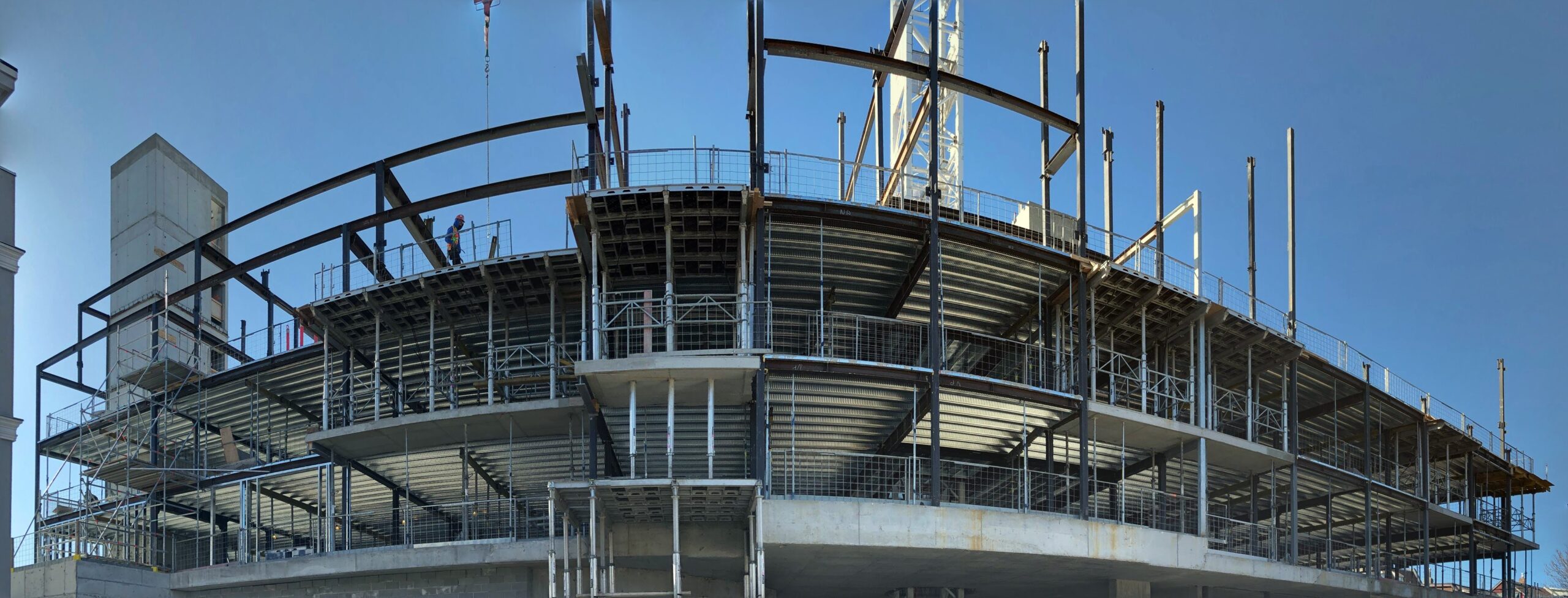A combination of persistence, diligence, and creativity can transform a heritage building into the perfect opportunity for a mid-rise development project. Heritage conversions are unique opportunities for a real estate developer willing to persist on a challenging path and create a one-of-kind mid-rise project. In the past few decades, municipalities and communities have been paying more attention to the role of heritage buildings in preserving the history and culture of a neighbourhood. These projects maintain the past and can help build a better future. Through an adaptive and comprehensive design, these projects have the potential to bring a new and vibrant energy to a long-established neighbourhood.

BENEFITS FOR MULTIPLE STAKEHOLDERS
A significant number of the heritage buildings are located in older neighbourhoods which have become part of the inner parts of cities, where new parcels of land of either very rare or non-existing. From a real estate developer’s perspective, these buildings present an excellent opportunity for defining a new project in more developed areas. Many of these buildings have underutilized pieces of land suitable for a mid-rise project and allow designers to incorporate the old and new into a creative design. Unique features of an existing building, such as exposed bricks, stained glass, arched pathways, etc., provide the real estate developers and their design teams a unique setting for distinguishing their projects from similar-scale projects and potentially charging higher premiums for the final product.
On the other hand, Mid-Rise buildings are meant to keep the original fabric of a neighbourhood intact as much as possible. From the community’s perspective, these projects increase the local diversity and growth opportunities for local businesses and improve the overall well-being of a neighbourhood. Through repurposing historic buildings such as public libraries, places of worship, industrial facilities, or even residential complexes, communities can also create room for more housing and commercial spaces.
Although some heritage buildings have been maintained well and are still serving their communities with their original purpose and at the same capacity, many have lost their original function or are no longer able to perform as they once did. Conversion or rehabilitation projects are a great way to help these buildings either gain a new purpose or get closer to their glory days.
The goal of these developments is to leverage the cultural and historical values of an existing building to revitalize and create additional value for the surrounding community.

Challenges
Building a bridge between the past and the future has never been easy. Heritage conversion projects are also no exception to this rule. Preserving a community’s rich history and background while creating a new project is no easy task and should not be treated as such.
Over the past decade, the general industry view has shifted from total/partial demolition or a simple facelift of the heritage to a more adaptive and incorporative use of the existing elements. In other words, the question has changed from which parts of the building can we demolish to how can we maximize the use of the unique characteristics of the existing building to create value for the new development.
While this shift in thinking is aimed at creating a better final product for all the stakeholders, it makes the design, development and construction of such projects significantly more complicated. More creativity and diligence translate into lengthier project lifecycles and, eventually, fewer economic gains for the investors.
Preserving our communities' cultural and historical heritage should not be mutually exclusive with new developments aimed at solving the housing crisis.
Obstacles or improvement opportunities
The uniqueness of these projects is in direct contrast to the one-size-fits-all approach of the many municipalities and governing authorities during the development process. The majority of entities involved in the approval and permitting process are not agile and flexible enough to help these unique projects come to life. This can make a project become economically unviable, in which case the community is deprived of the opportunity to create significant value for its citizens.
From a 10,000 ft view of the topic, the public & local authorities have two options for Heritage Conversion projects. Either support creative and entrepreneurial real estate developers to preserve as many of the unique features of the heritage building as possible while defining a viable project which leads to the creation of something unique, beautiful, and valuable for the community, or; drive these investments away from heritage conversion projects and allow these buildings to lose their utility over time and deteriorate. Currently, the cards are mostly stacked toward the latter option, which needs to change.
Developers & Investors who take on such unique projects face significant additional risk and uncertainty in the process. it is in the public best interest to support these endeavours while protecting our historical and cultural assets.
MANY OF THE IDEAS ABOVE ARE THE RESULT MULTIPLE CONVERSATION WITH MY GOOD FRIEND JOEY GIAIMO AT GIAIMO ARCHITECTURAL FIRM.
THANKS JOEY!



